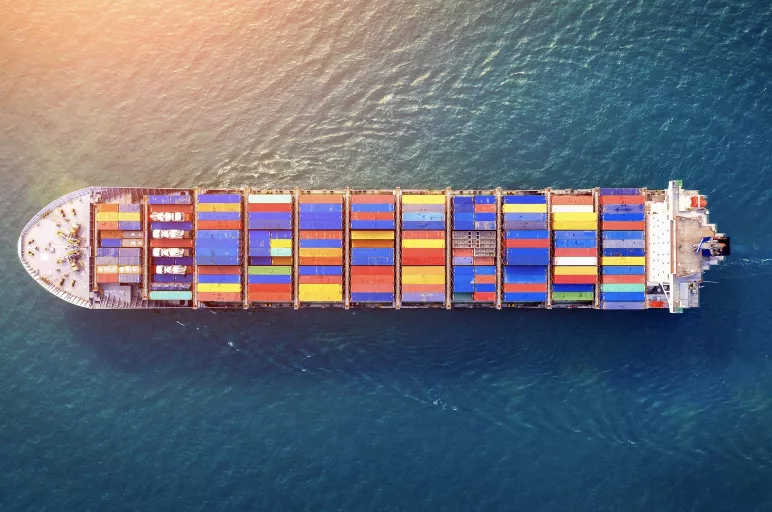
5 Supply Chain Operations Trends for 2024
- Supply chain operations must become faster, greener, and more localized in 2024.
- New technologies like AI and robotics will enable predictive, efficient operations.
- Leaders who redesign supply chains will gain flexibility and resilience.
January 31, 2024 | Supply Chain Strategy
Just when you thought supply chain volatility was a thing of the past, the crucial Read Sea shipping route was disrupted because of attacks on ships by rebels from Yemen.
The lesson?
To survive, supply chains operations have to constantly adapt.
As we enter 2024, these transformative pressures are expected to push supply chain leaders to make bold changes. From new customer demands to geopolitical shifts, ripples of change are spreading across global networks.
Savvy chief supply chain officers have a vital opportunity to get ahead of these disruptions. Companies that reimagine their supply chains will gain resiliency, visibility, sustainability, and efficiency. Those that cling to old models will struggle with outdated, fragile networks.
We delve into five key trends that will redefine supply chains in 2024.
Real-Time Supply Chain Visibility Moves from “Nice to Have” to “Must Have”
By 2024, real-time visibility will evolve into a required supply chain capability. Stakeholders both internal and external to the organization will expect up-to-date tracking across global networks. Supply chain leaders should adopt unified data platforms that integrate information from IoT sensors, logistics providers, and ERPs. Advanced analytics and digital twin modeling will convert this data into actionable insights.
Accurate visibility enables rapid responses to supply-demand mismatches, production problems, and delivery bottlenecks. Leaders who leverage emerging visibility technologies will optimize costs, improve customer experience, and streamline operations.
Also read: GEP Outlook 2024 report
Sustainability Becomes a Key Brand Differentiator
Customers, regulators, and investors alike now demand sustainable business practices. Supply chains that utilize green transportation, recyclable packaging, and circular models will gain a competitive edge.
Sustainability must become integrated in supply chain strategy and design. Life cycle assessment tools can identify environmental hot spots to target. Packaging innovations, renewable energy in warehouses, and carbon-neutral shipping are attainable, impactful goals.
Transparent sustainability reporting will also grow necessary as ratings agencies and consumers request ESG disclosures. Supply chains that embrace and quantify sustainability in 2024 will boost brand reputation.
Regionalized Supply Chains Reduce Risk and Improve Flexibility
Geo-political tensions, trade volatility, and disasters have exposed the risks of highly globalized supply chains. In response, brands will regionalize with nearshoring, multi-node networks, and localized production.
Regional networks balance cost, service, and resilience. Dual- or multi-sourcing critical components also mitigate risk. Manufacturing capability assessments by region, scenario planning, and total landed cost models will help reconfigure supply chains for flexibility.
While global supply chains won’t disappear overnight, regional models will gain favor in 2024 for their stability and responsiveness. Regionalization also enables just-in-time supply to meet customer demands.
Also read: GEP Spend Category Outlook 2024 report
Supply Chains Adopt Robotic and Autonomous Systems
Labor shortages and cost pressures will accelerate adoption of warehouse robotics and driverless vehicles in 2024. Leaders must re-evaluate processes ripe for automation.
Intelligent robotics and autonomous vertical and horizontal movement solutions enhance productivity. However, change management and upskilling programs help workers embrace these technologies.
Early adopters will gain major efficiency and cost advantages. Initial 5G applications will connect robotics and vehicles, although mainstream proliferation may take decades. Still, supply chains should pilot robotic/autonomous solutions in 2024 to understand their impact and potential.
Next-Generation AI Enable Predictive Supply Chains
Advances in artificial intelligence, especially generative AI, will revolutionize supply chain planning and execution in 2024. AI's pattern recognition on complex data identifies optimal scenarios for routing, sourcing, inventory levels, and delivery frequency.
With AI support, supply chains shift from reactive to predictive. By analyzing real-time data like weather, traffic, and customer trends, AI can forecast disruptions and future demand swings. Supply chain leaders can act ahead of time to mitigate risks and meet changing customer needs.
Next-gen AI can also automate tactical supply chain decisions and optimize end-to-end networks. AI helps dynamically manage trade-offs between cost, service levels, and sustainability. Additionally, AI augmenting human planners reduces planning cycle times.
Conclusion
Though supply chains face a period of uncertainty and change, it’s also an opportunity to reinvent operations. With strategic investments and visionary thinking, chief supply chain officers can build truly resilient, responsive, customer-centric supply chains.




